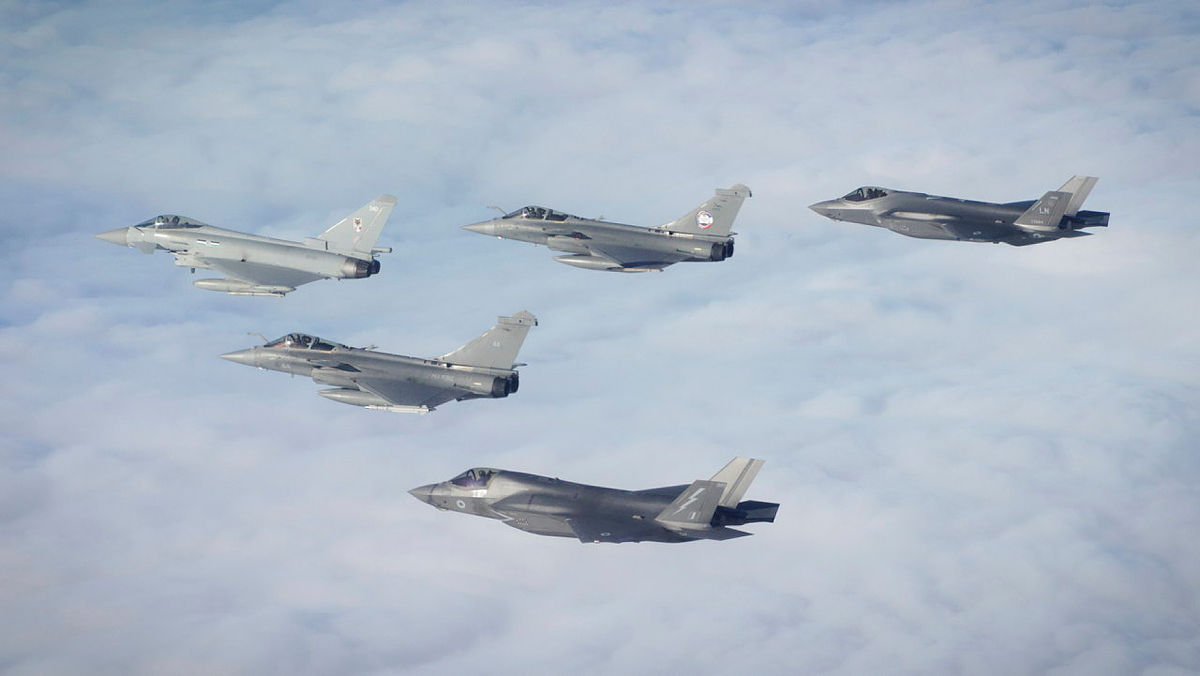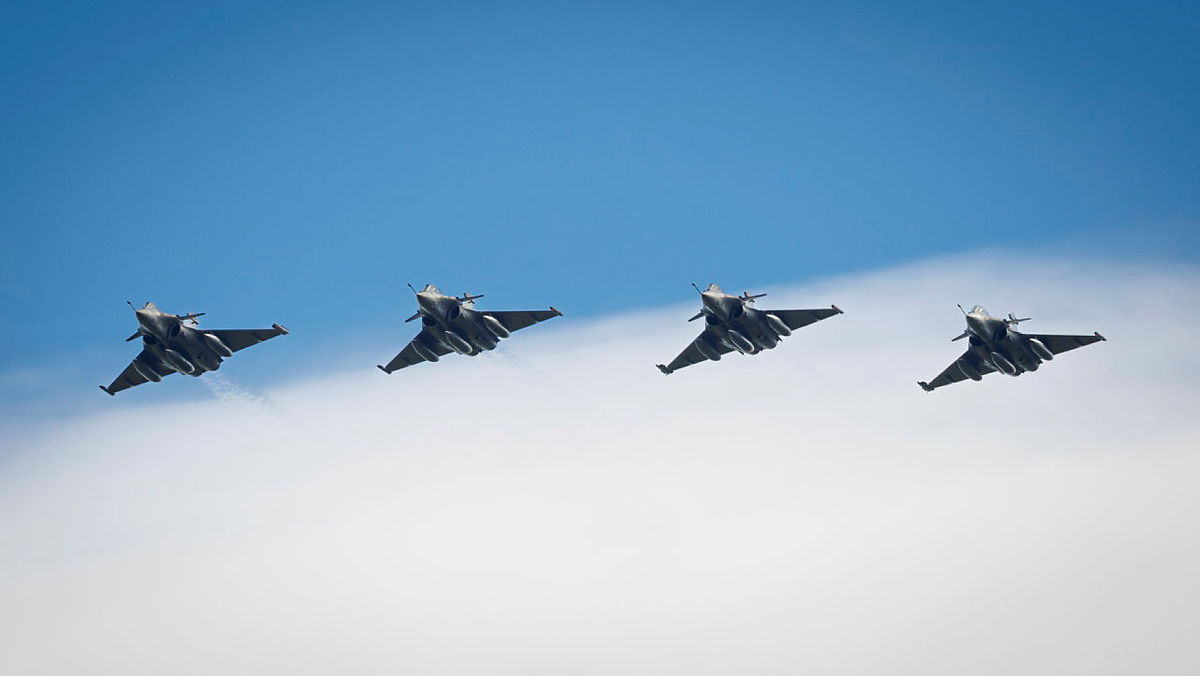In response to a simulated attack on their main operating bases, US F-35 fighter jets, collaborating with Royal Air Force Eurofighter Typhoon and French Rafale aircraft, recently conducted a dispersal exercise.
On November 9, the Royal Air Force disclosed that during their joint missions as part of Exercise Atlantic Trident, the fighter aircraft received in-flight notification that their home bases were inaccessible.
Consequently, they were instructed to disperse and relocate to RAF Leeming in Yorkshire, England. Following a successful relocation to a secluded section of the airbase, the aircraft established secure communications with HMS Queen Elizabeth and HMS Diamond.
This led to the activation of UK F-35s for support, and connections were made with Command and Control Centers on the ground and in the air to receive tasking orders. These orders included counter-air missions aimed at safeguarding the Carrier Support Group.
Lieutenant Colonel Veuille, Commanding Officer of the French detachment, said, “We deployed here at short notice, without any preparation. We hadn’t planned how to get here, where we’d be stationed, or where our logistical support would be. This is now the new way of facing the peer threats we are having at the moment.”
According to the RAF, the Typhoons and F-35Bs showcased their adaptability, with the former smoothly transitioning mid-air from air-to-air patrol to air-to-surface attack.
The UK’s F-35s maintained their mission for an impressive four hours through a process known as ‘hot-pitting’ on the Carrier. This involved refueling and simulating rearming with engines running.

The jets were air-to-air refueled by French MRTT, US KC135, and RAF Voyager aircraft to ensure continuous airborne capability.
Atlantic Trident 2023, hosted by the United Kingdom, is a multinational training event that brings together forces from France, the UK, and the US. The primary objective is to enhance interoperability and integration among participants, explicitly focusing on their fourth- and fifth-generation fighter aircraft.
This biennial exercise serves as a platform for collaborative training and strengthening strategic partnerships among the participating nations.
The exercise is also crucial in bolstering combat readiness and refining fighting capabilities among the participating forces. It offers valuable opportunities to test and enhance shared technical and tactical knowledge.
Focus On Dispersed Operations
The evolving geopolitical environment has compelled Western Air Forces to prioritize the dispersion of their operations. The recent exercise featuring US F-35s, UK Eurofighter Typhoons, and French Rafales is the latest addition to a series of similar training initiatives.
While the concept of dispersed operations is not new, having been practiced during the Cold War, some air forces moved away from this capability post-Cold War and are now retraining for such operations.
Air Marshal Harv Smyth, RAF Air and Space Commander, also underscored the significance of such operations. He highlighted the need to be prepared for various scenarios, including bases being denied or under threat.
He stressed the importance of the RAF’s capability to relocate its assets from home bases to alternative locations. The joint UK/French exercise exceeded expectations and was deemed a tremendous success in addressing these operational challenges, Smyth added.
The Royal Air Force (RAF) is also actively preparing its Eurofighter Typhoon FGR4s and F-35B fighter jets for highway operations in the coming years. This move aligns with a broader trend: the US military, including the Air Force and Marine Corps, is planning distributed air operations from unconventional airfields and runways.

The Agile Combat Employment (ACE) concept involves dispersing small numbers of aircraft to bases across the Indo-Pacific region. This approach makes it more challenging for potential adversaries, such as China, to target these aircraft.
The implementation of ACE is designed to complicate the enemy’s targeting process, present political and operational challenges, and provide increased flexibility for friendly forces, as outlined in the Air Force’s ACE doctrine.
The US Air Force has also been training airmen with multiple skills to support Agile Combat Employment (ACE) operations, enabling them to handle various tasks at locations with fewer personnel.
This aligns with the involvement of US special operators in ACE, especially in scenarios involving highways. Air Force commandos, with specialized training, play a crucial role in surveying potential airfields and managing air traffic during dispersed operations.
Concurrently, US special-operator forces are developing ‘Forward Arming and Refueling Points’ (FARPs), a concept closely associated with ACE.
This underscores the importance of refueling and rearming aircraft wherever they are, particularly when deploying to remote and austere locations on short notice.
The collaboration between multi-capable airmen and special operators enhances the overall effectiveness of ACE, contributing to the agility and adaptability of air operations.
- Contact the author at ashishmichel(at)gmail.com
- Follow EurAsian Times on Google News




